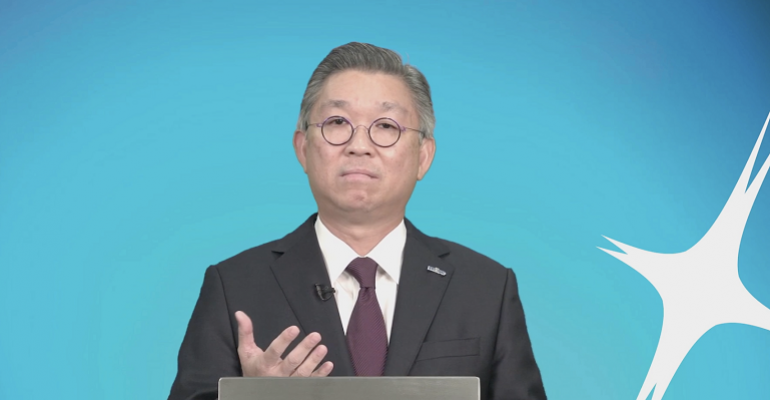The Malaysian shipowner has been a pioneer in using LNG as a marine fuel and is now set for a similar course with ammonia as part of the Castor Initiative.
“Decarbonisation is without doubt one of the greatest risks our industry has ever faced in its history. How does one even begin to deal with a risk that has no immediate or ready made solution. How does one cope with a risk where the financial cost of our course of action is difficult to quantify?” Yee told the audience of the 15th Singapore Maritime Lecture on Monday.
MISC invested in its first LNG powered aframax tanker newbuildings in 2017 and has followed this up with LNG dual-fuel shuttle tankers and VLCCs, as LNG as a marine fuel has started to gain traction.
On the decision to invest in LNG fuelled tonnage, Yee said: “While the world has not fully solved the issue of methane slip and developed sufficient LNG bunkering infrastructure worldwide to facilitate greater adoption of the fuel the problems are being cut down in size with every step of progress we make.”
Yee clearly believes that only by taking risks can progress be made, and that sitting around and waiting is not an option.
“What mattered to me is we take the first step. I’m not anyway brushing aside the enormity and challenges of the problems to be solved along the way. But I believe not trying to do something is a greater sin than trying and failing. It is when we fail that we learn,” he stated.
Glenn Edvardsen, CEO of UECC appeared on the Maritime Podcast recently talking about UECC’s experience running LNG powered vessels – listen to the podcast below
MISC is drawing on its experiences as an early adopter of LNG as a marine fuel in the wider mission to dercarbonise shipping.
“The key to solving the challenge of decarbonisation is to break the large problem down into small chunks. Smaller parts you can afford to risk and stomach the failure. Certainly, this was the approach we took when we first invested in dual fuel aframax tankers in 2017,” Yee explained.
However, it comes to the decarbonisation journey partners and collaboration and are also key to real progress.
“I am mindful I can do much more if I can find partners who have the same aspirations, beliefs and motivations. Collaborate to accelerate,” he said.
The result of this gave birth to the Castor Initiative, which has six partners MISC, The Maritime & Port Authority of Singapore, Lloyd’s Register (LR), Samsung Heavy Industries (SHI), MAN Energy Solutions (MAN) and Yara International, and is developing ammonia as a fuel.
“Today the six partners represent the necessary complete eco-system of subject matter experts and industry influencers that I truly believe will help an ammonia fuelled vessel a reality,” Yee said.
“When the time comes we will put our money where our mouth is and invest in that ammonia fuelled vessel.”
Yee believes that many such collaborations exploring different pathways will be necessary to decarbonise shipping.
“I’m always very heartened to read and see so many more such global partnerships and collaborations being formed as we speak. I do not see any of these partnerships and collaborations as competition, np far from it, I am big advocate of multiple and different pathways to decarbonisation,” he said.
“There is no one single silver bullet. We will need multiple pathways, multiple options. There are no right or wrong pathways as long as it brings us closer to a net carbon zero future.”
Copyright © 2024. All rights reserved. Seatrade, a trading name of Informa Markets (UK) Limited.
Add Seatrade Maritime News to your Google News feed.  |


